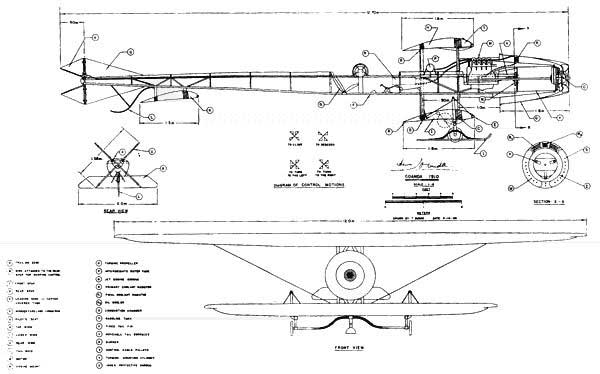Coanda 1910 - Worlds First Jet Airplane
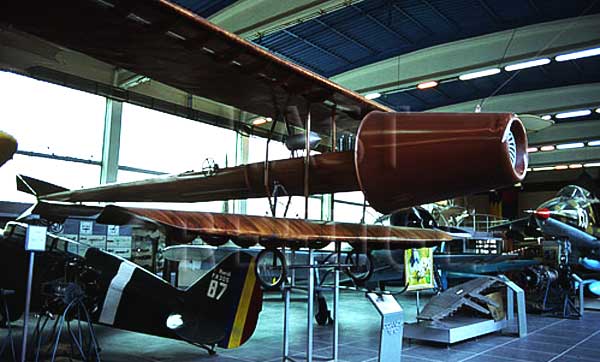
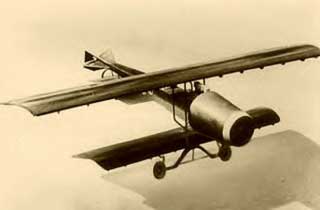
One of the first things you'd notice about this slim biplane was its lack of propeller. Designed by 24-year-old Romanian Henri Coanda, the airplane made its official debut at the October 1910 Salon de l'Aeronautique in Paris, where it wowed the crowd. That's not only because the biplane had a complete wooden cover, and its struts and bracing wires were kept to a bare minimum, but also because its tractor-mounted engine drove a centrifugal compressor through a series of gears. And that meant it was the very first jet airplane. But while it looked nice just sitting there at the Salon, it did not have the right stuff to lift off the ground. The Coanda weighed 926 pounds, yet its 50-horsepower engine only produced 450 pounds of thrust. Henri Coanda moved to Britain in 1912 and had a fine career as a designer at the Bristol aircraft company. In the 1930s, however, two designers-Britain's Frank Whittle and Germany's Hans von Ohain-took a page from Coanda's book and designed the world's first true jet engines.
Coanda 1910 Jet
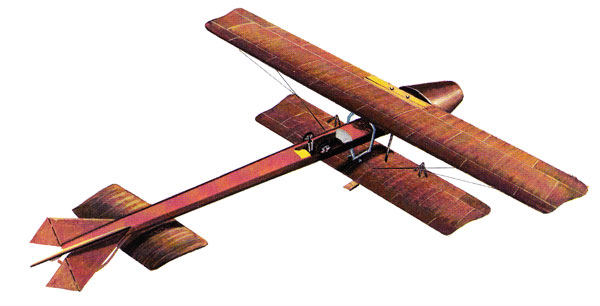
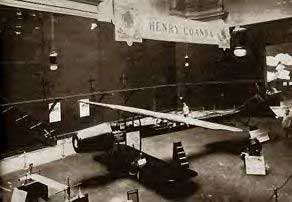 During this time France kept up her role as the most innovative and enthusiastically air-minded nation. There was continuous activity, introducing new ideas into the aeronautical field, many of which had a lasting effect on the development of aviation.
During this time France kept up her role as the most innovative and enthusiastically air-minded nation. There was continuous activity, introducing new ideas into the aeronautical field, many of which had a lasting effect on the development of aviation.
One of the most revolutionary airplanes was designed and built by Henri Coanda; it was named after him and was certainly ahead of its time-it could, in fact, be considered the first "jet" aircraft in history. It never actually managed to fly, but was ample evidence of the talent of its young Romanian designer who built it when he was only twenty-four. It was presented at the Salon de l'Aeronautique in Paris in October 1910. Through a series of multiple gears, the airplane's piston engine drove a centrifugal compressor installed in the forward part of the fuselage. The main reason for its failure was the weak thrust supplied by the compressor 450 lb. Apart from this revolutionary form of propulsion, the Coanda biplane also impressed those who saw it with its elegance and structural ingenuity. For the first time struts and bracing wires had been reduced to a minimum and, also for the first time, the airplane was completely wooden skinned.
In 1911, Coanda built another interesting aircraft. Its structure was very similar to the previous aircraft and it was powered by two 70-hp Gnome rotary engines, positioned very unconventionally crosswise in the forward part of the fuselage, which drove a four-blade tractor propeller. The aircraft was not a success and after this new setback Coanda settled in England in 1912, where he was to have an outstanding career as a designer with the British and Colonial Aeroplane Co. (Bristol).
The Coanda was the first 'jet' plane in history, a forerunner of modern aviation. It never managed to fly, but was superb evidence of the talent of its young designer, the Romanian Henri Coanda, who was only 24 when he built the plane. It was presented at the Salon de l'Aeronautique in Paris in October 1910. Through a series of multiple gears, the plane's piston engine drove a centrifugal blower installed in, the forward part of the fuselage. Apart from this revolutionary form of propulsion, the plane also impressed those who saw It with its elegance and its structural features. Struts and bracing wires were reduced to a minimum, and for the first time, a plane was completely covered with wood. The chief reason it never got off the ground was the weak thrust supplied by the blower.
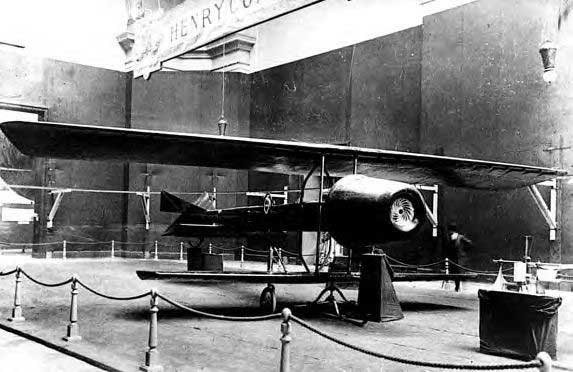
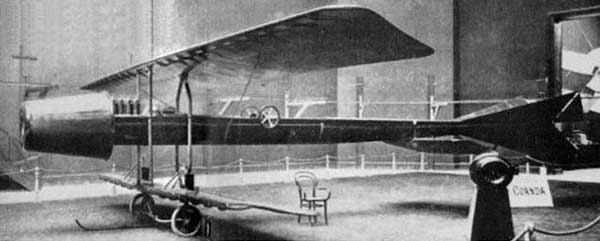
Specifications for the Coanda 1910 Jet Airplane
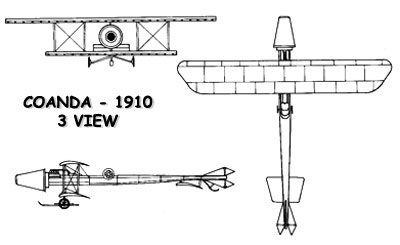 |
Length: 41 ft Wingspan: 33 ft 10 in Wing area: 352 ft² Gross weight: 920 lb Powerplant: 1 × Four-cylinder, In-line, Water-cooled engine developing 50 hp at 1,000 rpm driving a compressor, 450 lbf thrust |


